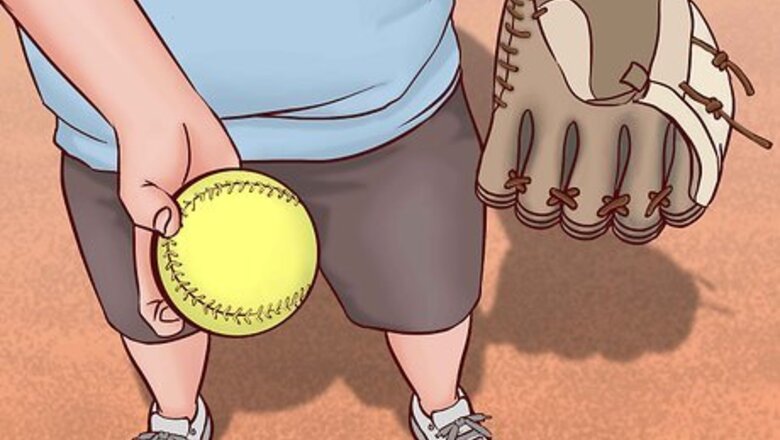
views
Using a Basic Underhand Pitch
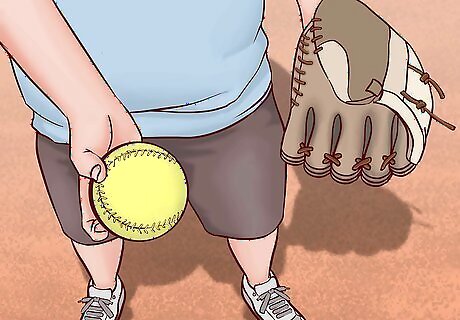
Hold the ball in the palm of your dominant hand. Make full contact with the ball using your palm and fingers. Wrap your fingers around the ball in a way that feels comfortable to you. Grip the ball tightly using all of your fingers and thumb. Hold the ball tightly enough to keep it in your hand. If you are right-handed, hold the ball in your right hand. If you are left-handed, hold the ball in your left hand.

Stand with your feet shoulder width apart and take a step back. Face the direction you want to pitch the ball. Then, take 1 step back with the foot on your dominant side, so that your body is now slightly angled towards your target. If this feels unnatural to you, you can also keep your feet together or bend slightly at the waist. Make sure to keep your knees soft. Do not lock them!
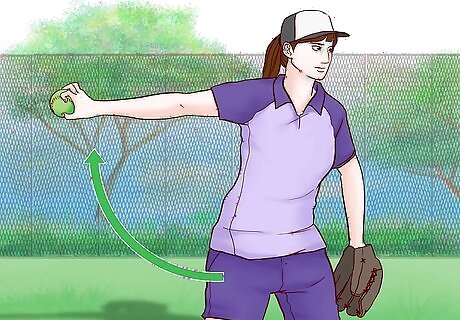
Swing your arm backwards using an underhand motion. Bring your arm back alongside your hip after you take a step back. Hold the ball so that it is just behind you before you start to pitch it. Keep the ball below the level of your waist with your arm out straight. Make sure that your palm is facing your target.
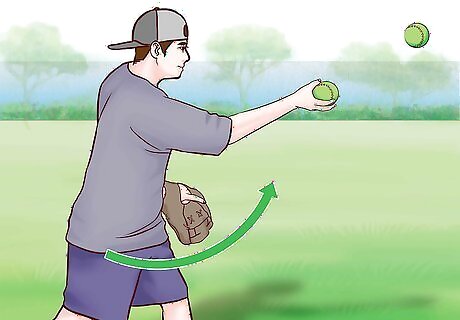
Throw the ball underhand as you step forward. Swing the ball forward and upward as you take 1 step ahead with the foot that was positioned behind you. Release the ball right after your arm passes your thigh. Loosen your fingers to release the ball and let the ball fly up and towards your target. This movement should be quick, but not too forceful or you may end up getting an excessive speed warning from the umpire. Tip: Check to see that the ball arcs up at least 3 ft (0.91 m) but no more than 10 ft (3.0 m). This is the ideal height for a slow pitch.
Throwing a Curveball
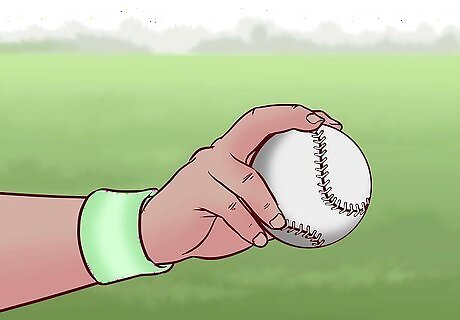
Hold the ball with your index finger and thumb on opposite seams. Press your palm against the surface of the ball. Then, arrange your fingers so that your index finger is parallel to 1 of the seams and your thumb is parallel to the opposite seam. Grip the ball tightly with your fingers to keep the ball in your hand. The rest of your fingers can press against the ball where it feels natural, but focus most of the pressure on the ball with your index finger and thumb. Imagine you are gripping a soda can. This is similar to how your index finger and thumb should be positioned on the ball.
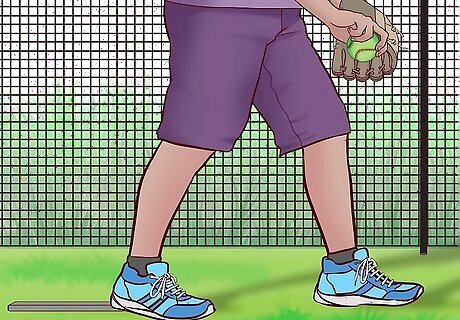
Step back and plant your feet firmly on the ground. Check to ensure that your feet are about shoulder-width apart. Then, take 1 step backwards with your dominant foot, which is on the same side as the hand you are using to hold the ball. Keep your knees loose, not locked.
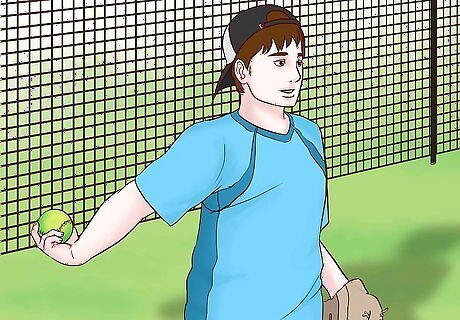
Bring the ball behind you with your palm facing up. Use a swinging motion to move the hand holding the ball behind you. Keep your arm straight and the ball below the level of your waist as you do this. The ball should be right behind your hips. Bring your arm back to a comfortable position. Don’t overextend it.

Throw the ball and twist your wrist slightly to the left on the release. This will put a spin on the ball after you release it, which may help to make it more challenging to hit. As you bring the ball forward to throw it, turn your wrist by about 90 degrees to the left. If you are left-handed, twist the ball to the right as you bring it forward to pitch. Tip: Do not release the ball too sharply, or it might not be considered a slow pitch. In this case, the umpire may issue an excessive speed warning.
Pitching a Knuckleball
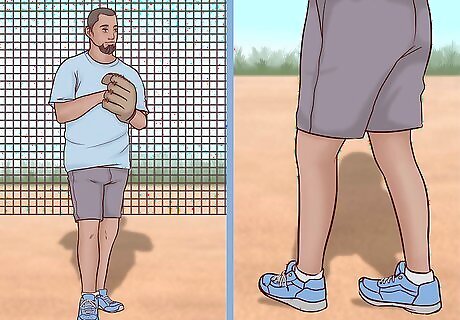
Stand with your feet shoulder-width apart. Plant your feet firmly on the ground so that they are in line with your shoulders and so that the front of your body is angled towards your target. Keep your knees soft and your body loose. You may also take a step back with your dominant foot or bend slightly at the hips if this feels natural to you.Tip: Make sure to stand at a comfortable distance from where you want to pitch the ball. Move closer or further away if needed.
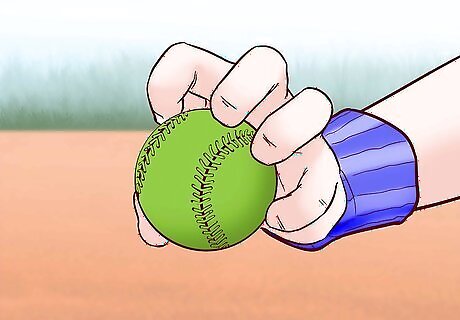
Curl your fingertips under and press them against the ball. Place the ball in your dominant hand so that it is resting in your palm. Then, position your thumb on 1 side of the ball and press your knuckles into the opposite side of the ball along the seams. Use enough pressure to maintain a good grip on the ball. If you are right-handed, hold the ball with your right hand. If you are left-handed, hold the ball with your left hand.
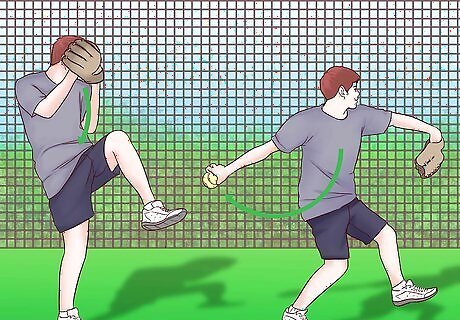
Bring the ball behind you before you throw it. Keep a good grip on the ball as you wind it back, and remember to keep it low. Don’t raise it up higher than the level of your waist. Hold the ball so that your knuckles are facing in the direction you want to pitch.
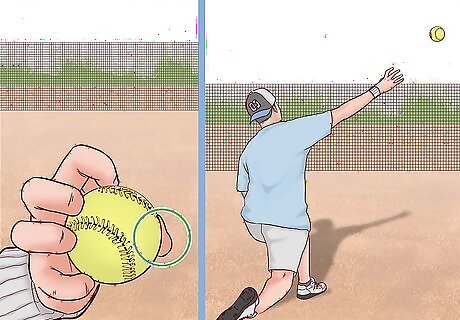
Pitch and release the ball with your thumb first and your fingers last. Swing the ball forward with an underhand motion. Keep your knuckles facing ahead and moving in the direction of your target. Loosen your grip on the ball with your thumb first and allow the ball to roll over the tips of your knuckles as you pitch. Remember to keep the ball below the level of your waist as you swing forward.




















Comments
0 comment